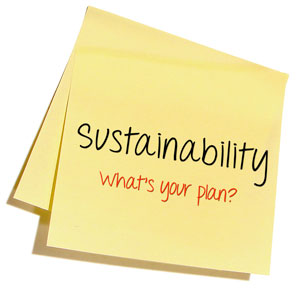Sep 30, 2015
Standing the Test of Time: A Lesson in Sustainability Planning
by Kate Menzies
 Organizations looking to
breathe life into new or expanding programs and services
often turn to grant funds for needed financial support.
That support, however, is typically erratic and temporary
in nature. In order for a program to stand the test of
time and truly impact rural communities, organizations
need to prepare for what will happen after grant funds
disappear.
Organizations looking to
breathe life into new or expanding programs and services
often turn to grant funds for needed financial support.
That support, however, is typically erratic and temporary
in nature. In order for a program to stand the test of
time and truly impact rural communities, organizations
need to prepare for what will happen after grant funds
disappear.
Jeanne Edevold Larson, Executive Director of the Northern Dental Access Center in Bemidji, Minnesota, has had plenty of experience in applying for grant funds and knows the importance of creating a plan for a program's sustainability.
"Very few funders are interested in long-term funding," said Larson. "Their first thought is 'yeah this is great, but what are you going to do once our funding ends?'"
Sustainability doesn't just happen. It's a proactive activity.
Grantors seek to invest in organizations who create programs that will have a lasting impact on communities. They don't want their funds to be the only thing that will keep a program afloat. That is why sustainability plans are essential to grantors and grantees.
"You've always got to keep the end in mind," said Alana Knudson of the NORC Walsh Center for Rural Health Analysis. "Sustainability plans make your proposal that much stronger and show the grantor that you are thinking ahead."
Larson advised organizations to consider grant funds as a way to see what does or doesn't work without exhausting an organization's own funds. It provides an initial cushion so that organizations can see what ways to best allocate their budgets once funding eventually ends.
Having a roadmap and a collective vision of what you want to accomplish at the very beginning of a program is key to ensuring its sustainability.
"Having a roadmap and a collective vision of what you want to accomplish at the very beginning of a program is key to ensuring its sustainability," said Jayne Berube of the Federal Office of Rural Health Policy.
Considerations for Sustainability Planning
"Staying mission focused is important," said Larson. "It's easy to go after grant funding because it's there, but you have to be mindful that it supports your organization's purpose and objectives."
Knudson also added that it is important to take into account who your stakeholders are during this planning time. Ask yourself, "Who are the people who are committed to the program?"
Keeping these stakeholders engaged throughout the program is vital, as these people can be a group of champions who will help continue program efforts after funding is depleted.
Organizations should also be prepared to accommodate changes in the healthcare environment and technology when creating a plan for sustainability, according to Berube.
Staying mission focused is important. It's easy to go after grant funding because it's there, but you have to be mindful that it supports your organization's purpose and objectives.
Funders appreciate it when organizations take the time to develop a sustainable vision for the future. When looking at sustainability plans, there are many factors grantors will consider.
"A grantor is going to be looking at issues around a program's positioning, how it fits within the grantor's and grantee's strategic visions, if it has the capacity to carry out this vision, and if the right leadership is in place," said Beverly Tyler, Director of the Community Health Systems Development Team at the Georgia Health Policy Center.
Grant funders typically have constraints as to how money can be spent. They want to invest in organizations with a good track record and a solid financial base, as it is often less risky.
"Grantors often juggle contradictory ideas," said Larson. "They want new and innovative programs, yet embedded in best practices. They look for proposals that can dance the dance in a way that makes sense."
Knudson added that funders look for levels of accountability within organizations seeking funding and what funding mechanism is being envisioned for post-grant funding.
Community stakeholders also need to be taken into consideration.
"There has to be a need that is locally driven in order for a program to be successful," said Knudson.
The Grant is Ending. Now What?
Having the sustainability plan in place and actively working it during the grant period will position the organization well to keep the program going. However, Tyler notes that the plan needs to include steps to gauge whether the program should be continued once the grant funding ends.
"A critical assessment of the impact of your work and what you've done needs to take place," said Tyler.
Program costs, impact, and results all need to be examined. Tyler mentioned that sometimes program activities will need to be scaled down or adapted in order to better sustain the program. At this point, organizations need to ask themselves tough questions, such as "What new or different partners do we need to continue? Do we have the right partners/staffing at the table? Can we afford this level of staffing? What part of the budget can we get in kind?" to make sure they continue on the right path.
Most of the time, according to Tyler, programs get absorbed by their consortium members once funding ends.
Sustainability plans are a great way to aim for a positive return on investment. No organization wants to have a program disappear once grant funding ends. Organizations need to be diligent in creating and adapting a sustainability plan throughout the course of a project to make sure programs are available to serve rural communities for years to come.
"Sustainability doesn't just happen," said Knudson. "It's a proactive activity."
